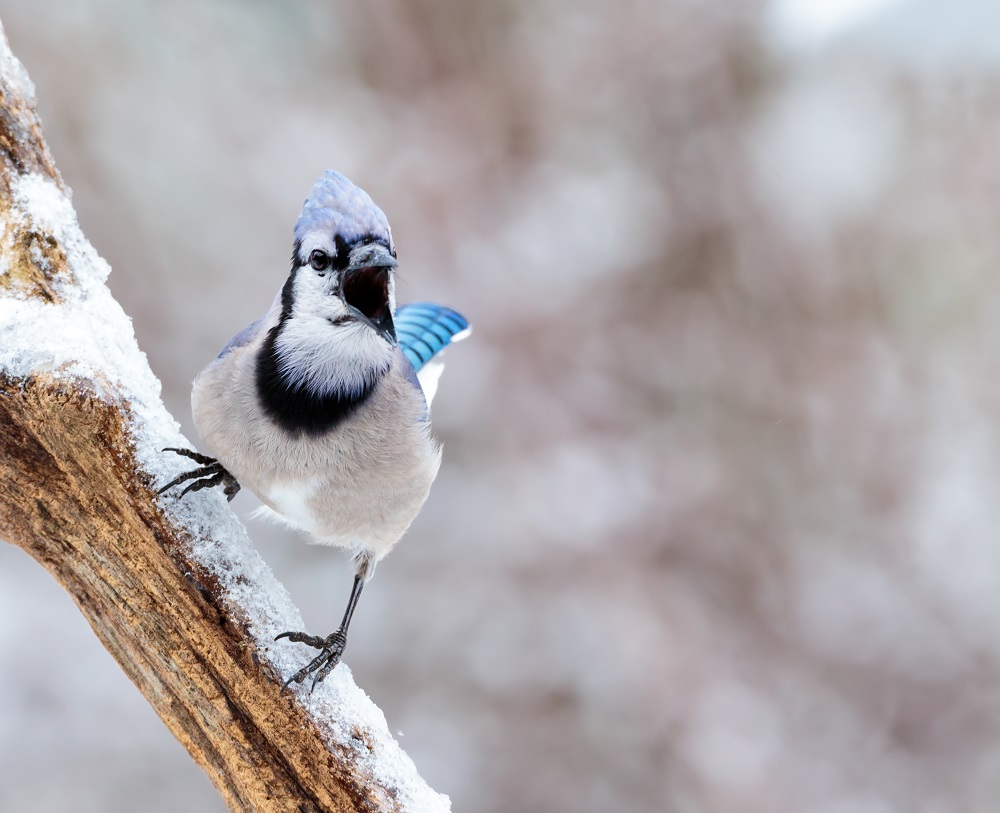The County of Haliburton is once again dealing with an unexpected flock of vandals damaging municipal address signs.
Director of Public Works Craig Douglas reported about the problem of blue jays defacing 911 signs at the June 24 council meeting. The issue spiked around 2014, when the birds damaged hundreds of signs, prompting the County to install plastic coverings to prevent further damage. Douglas said the issue is being felt hard again this year, with about 400-500 signs being defaced. The expected replacement cost is $7,500.
To address it, Douglas proposed replacing the signs in bulk at the County’s expense, with plastic coverings added once again. Council approved the expenditure.
“We were hoping it was a one-time issue,” Douglas said. “It’s a health and safety issue and we want to get on it right away.”
Douglas said the plastic coverings cost about $15 per sign. Staff had tried to chase individual homeowners to help cover replacements in the past, Douglas said, but found it not worthwhile.
“We were chasing money, going on a long time and making these single trips out to who knows where to replace one sign,” Douglas said.
Douglas said the issue has persisted over the years, with up to 35 signs annually replaced, but this year has been the worst one since 2014.
Ornithologist offers answers
Emeritus professor of Wildlife Biology at McGill University David Bird said this is not a situation he has heard of before, but he is “almost 100 per cent certain” the birds are attacking the signs for calcium carbonate, used in paint and coatings. He said it is a nutrient blue jays use to produce eggs. He said there are accounts of them pecking at the paint on the sides of houses or railings for the same reason.
“The birds are deriving a nutritional benefit from eating the calcium carbonate in the paint,” Bird said, adding they may ingest it immediately or stow it away.
He said other possible explanations for birds pecking at artificial surfaces – such as defending territory or even reminding humans of empty feeders – do not make sense in this scenario.
Bird said the behaviour may have spread within the County because of how Jays observe each other.
“Birds are very visual creatures and they watch each other all the time,” he said. “These kinds of behaviours get copied by other birds. Because they say ‘hey, that guy must be getting something good off that sign,’ and next thing you know, it’s part of the population.”
Douglas said in smaller numbers, they have found other road signs damaged as well. He said they have found reports of similar issues in the Parry Sound area and Cook County in Minnesota, but not amongst Haliburton’s neighbours.
Bird said the spike this year may have something to do with changes in natural conditions, causing jays to have a harder time finding egg-making nutrients in the environment. Those conditions may be local-specific, which may be also be why other places do not experience the problem, Bird said. The remote landscape of Haliburton may also mean the jays do not spread the behaviour farther out to neighbouring areas, he said.





